No products in the cart.
July 28, 2024 9:23 am
July 28, 2024 9:23 am
In this article, we will explore the connections between Odin, Santa Claus, Yule, and Norse mythology. Understanding these Yule traditions can enhance our celebrations and help us appreciate historical customs. We will also look at how ancient beliefs still impact modern holiday traditions.
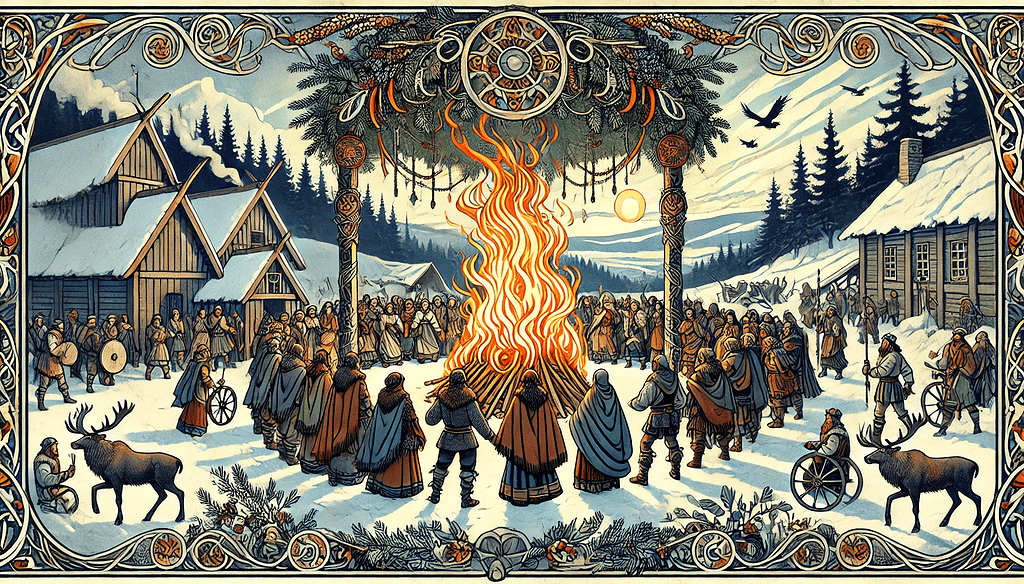
Yule traditions have a deep historical background that reflects the beliefs and practices of ancient cultures, particularly those who celebrated feasts and rituals that coincide with the winter solstice.
This section explores the significance of Yule in pre-Christian cultures, its connections to other pagan winter festivals, and how these customs influenced the development of modern Christmas celebrations.
Yule, derived from the Old Norse word Jól, originally referred to a series of midwinter celebrations. These festivities were not just about merrymaking; they held profound spiritual significance.
They marked the rebirth of the sun and symbolized hope, renewal, and the cyclical nature of life. For ancient cultures dependent on agriculture, this return of sunlight heralded a new growing season and survival through harsh winters.
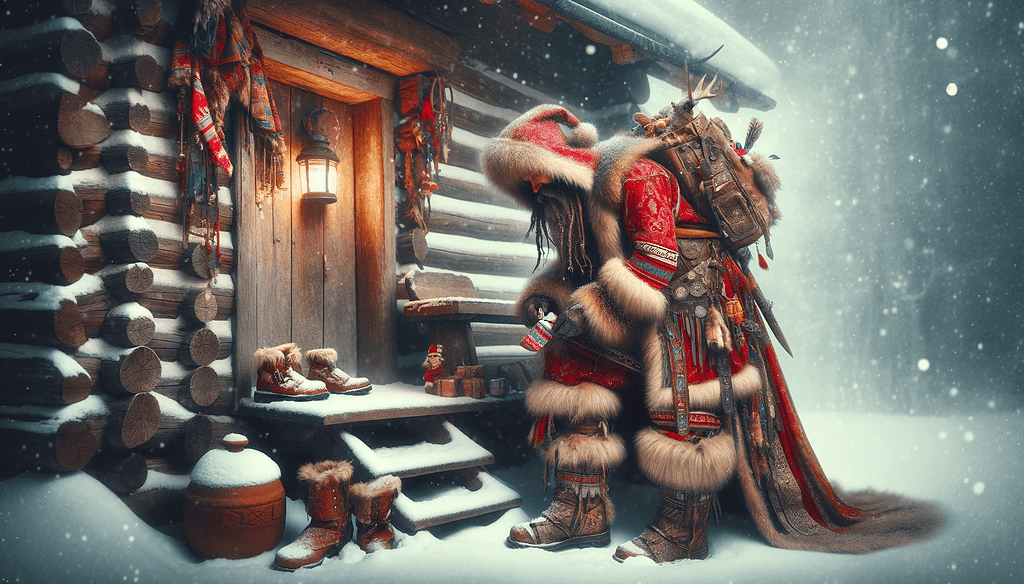
Pagan winter celebrations went beyond Yule. Festivals such as Saturnalia in Roman culture, which took place in December, shared similarities with Yule in terms of feasting, gift-giving, and honoring deities.
Saturnalia celebrated Saturn, the god of agriculture, and included several customs that have parallels in modern Christmas traditions:
These pagan traditions created a template for what would eventually evolve into Christmas.
The conversion from paganism to Christianity did not erase these beloved winter celebrations but rather incorporated them. In fact, we might have to rethink our modern conceptions of how Christianization in Europe unfolded.
As researched by scholars such as the Professor Emeritus Ramsay MacMullen have shown, the adoption of Christianity in Europe was by far not a ‘tabula rasa’ event, there was no clean ‘break away’ from its former pre-Christian values and traditions.
Contrary, formerly pre-Christian beliefs hybridized with the Christian worldview over time. When Christianity spread across Europe, early Christians adopted many pagan customs to ease the transition for converts.
By aligning Christmas with existing winter solstice festivals, they provided familiar structure and meaning to new Christian holidays.
Examples:
Recognizing these roots helps us appreciate how deeply interconnected our holiday traditions are with ancient practices. Celebrating Yule today can be seen as reclaiming these ancestral customs while honoring the natural rhythms revered by our forebears.
By understanding these historical contexts, you gain a richer appreciation for how Yule traditions have shaped modern-day celebrations.
This journey through time reveals an intricate blend of pagan customs seamlessly woven into contemporary holidays, illuminating our collective heritage.
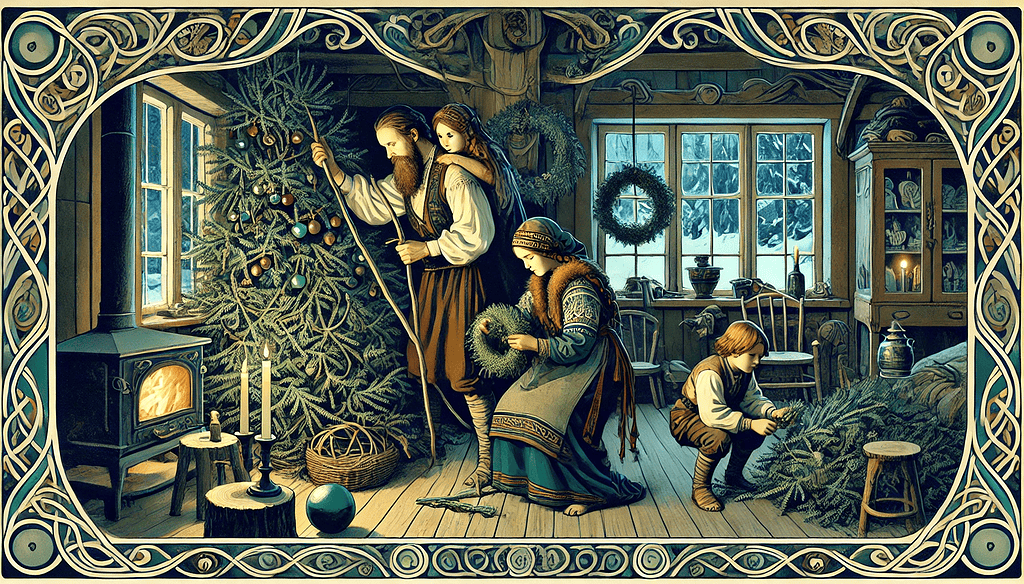
The ancient pagan winter solstice celebration, known as Yule, has deep historical roots among the Germanic peoples and hence among Germanic workers such as farmers, traders and seafarers such as the Vikings.
This time of year marked the rebirth of the sun after the longest night, symbolizing hope and renewal.
The term “Yule” itself originates from the Old Norse word Jól, which was associated with feasting, merrymaking, and various religious rites.
During Yule, communities would gather to celebrate the return of the sun. Activities included:
These traditions provided a sense of continuity and connection to nature’s cycles.
Norse mythology played a crucial role in shaping Yule traditions. The gods and goddesses of Asgard were believed to be closely involved in human affairs during this sacred time. The festivities were not just about revelry but also about honoring these divine figures.
Among these mythological beings:
These deities influenced various rituals and customs observed during Yule.
Several key figures from Norse mythology have left their mark on winter traditions that persist even today:
By understanding these ancient connections, you gain deeper insight into how modern customs have evolved from these rich mythological traditions.
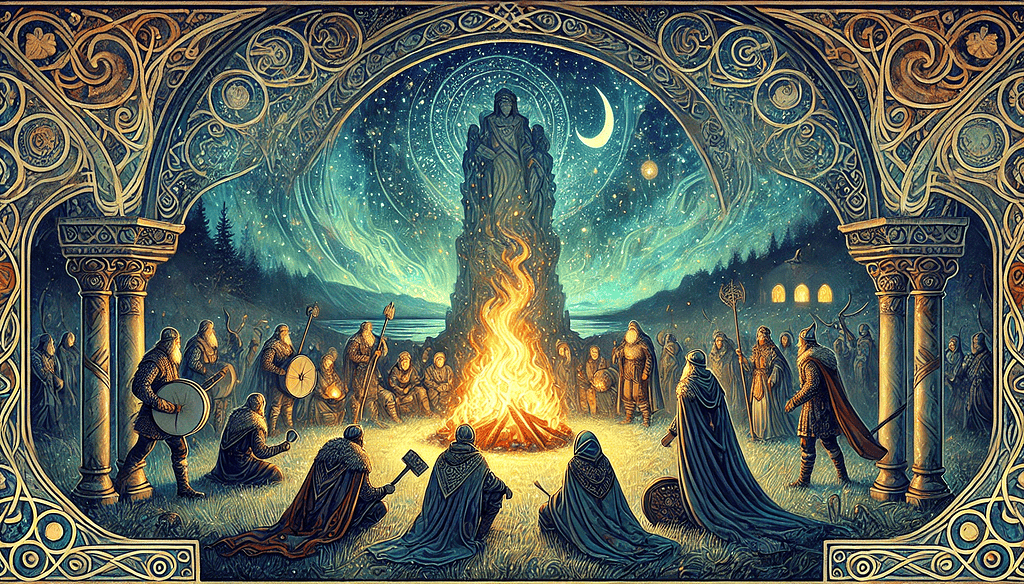
Within Norse mythology, Odin stands as a complex and multifaceted deity. Often referred to as the Allfather, Odin is revered not only for his wisdom but also for his benevolence.
He is a god of many roles—warrior, seeker of knowledge, and shamanic wanderer. But during Yule, his character takes on a particularly festive aspect that resonates with many modern-day customs.
Odin’s wisdom is legendary. He sacrificed an eye at Mimir’s well to gain unparalleled knowledge and hung himself on Yggdrasil, the World Tree, for nine nights to acquire the secrets of the runes. These acts underscore his commitment to wisdom and self-sacrifice.
During Yule, this wise and benevolent nature shines through in various traditions.
Central to Odin’s Yule persona is his role as leader of the Wild Hunt. This spectral phenomenon sees Odin galloping through the night sky, accompanied by a retinue of ghostly hunters.
This chilling yet fascinating image has influenced numerous winter traditions, including stories that warn children to behave lest they encounter the Wild Hunt.
Gift-giving during Yule can be traced back to Odin’s influence. Known for bestowing gifts upon those he favored, Odin’s generosity is mirrored in modern gift-giving customs around Christmas.
His connection to gift-giving is further solidified through tales where he brings blessings and prosperity during the long winter nights.
“In Norse tradition, Odin’s arrival was eagerly anticipated as a harbinger of good fortune and joy.”
The image of Odin soaring through the sky on his eight-legged horse Sleipnir has even contributed to contemporary depictions of Santa Claus riding a sleigh pulled by reindeer.
The parallels between these two figures are evident when you consider their shared traits: both are wise, both lead magical journeys through winter skies, and both bring gifts to those who have been good throughout the year.
Understanding Odin as a central figure in Yule celebrations offers valuable insights into how ancient customs evolve into modern traditions.
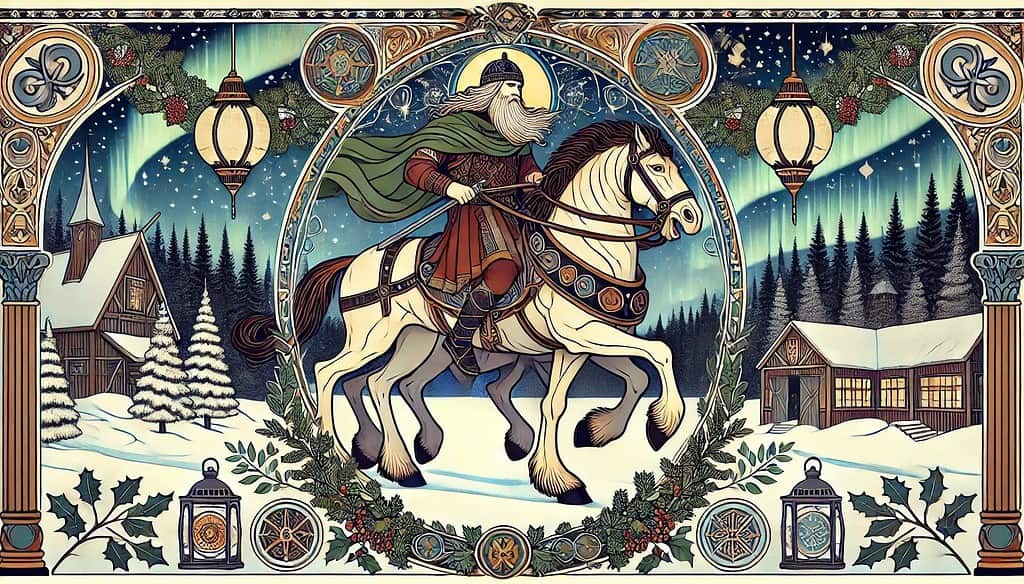
The Wild Hunt mythos is a captivating and eerie part of Norse folklore, especially prominent during the twelve nights of Yule.
This spectral procession, led by Odin himself, rides across the night sky with a host of ghostly figures and the souls of the dead. As you might imagine, witnessing this phantom cavalcade was both awe-inspiring and terrifying for ancient peoples.
During the longest nights of the year, from mid-December to early January, the Wild Hunt was believed to be most active.
These nights were not just about celebrating the return of the sun but also about acknowledging and respecting the spirits that roamed freely. People would stay indoors, lest they be swept away by Odin and his horde.
In German folklore, as shown by scholars such as Wolfgang Menzel and Karl Simrock, there was a widespread belief that the Wild Hunt event would bring the souls of unborn dead ancestors back to reincarnation, and the Wild Hunt event would likewise restore fertility in nature.
Sometimes, the Wild Hunt would spread the seeds of crops via the great plough (Ursa Major star constellation) into the wintery soil.
Surprisingly, many elements of modern Christmas traditions echo these ancient beliefs. The concept of Santa Claus’s “naughty or nice” lists can be traced back to Odin and his Wild Hunt.
Odin, known for rewarding good behavior and punishing bad deeds during Yule, shares striking similarities with Santa’s annual judgment.
Key Aspects:
Santa’s nocturnal journey delivering gifts mirrors Odin’s own travels during Yule. While Santa navigates chimneys and rooftops, Odin’s spectral hunt blazes through the celestial sphere. The parallels between these figures reveal an enduring cultural synthesis that has shaped our holiday lore.
The chilling allure of the Wild Hunt enriches our understanding of Yule traditions. Embracing these ancient tales helps us appreciate how deeply rooted our festive customs are in pagan mythology. This connection between past and present adds a layer of enchantment to our modern celebrations.
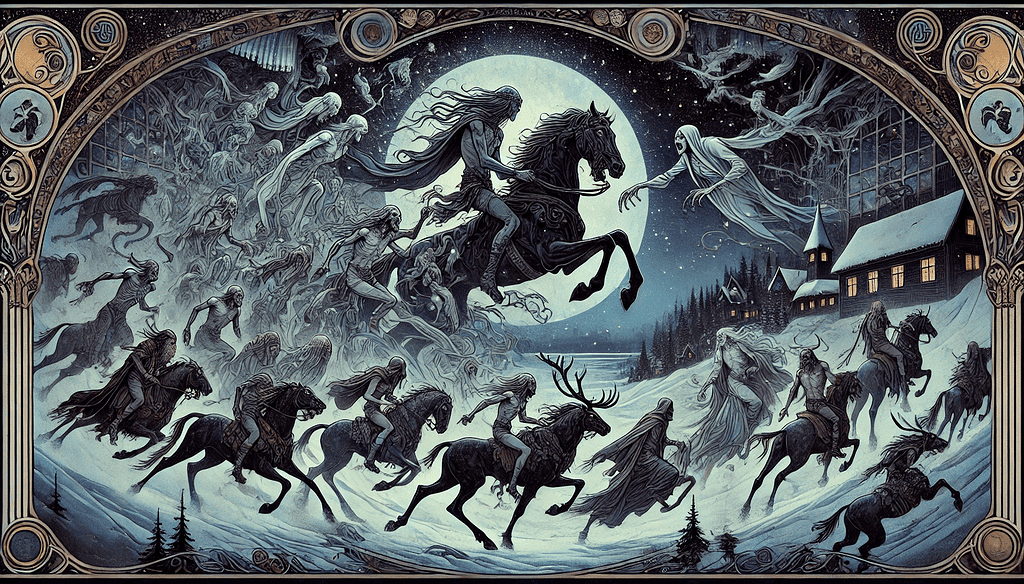
The Norse tradition of the twelve nights, or Yuletide, holds significant parallels to the modern “twelve days of Christmas.”
These ancient celebrations marked a period of feasting, merrymaking, and honoring deities, coinciding with the winter solstice. Each night had its own set of rituals and customs, deeply rooted in Norse mythology and pagan beliefs.
The transition from pagan customs to Christian holidays didn’t erase these traditions but transformed them:
Understanding these connections enriches our appreciation of both ancient Yule celebrations and contemporary Christmas customs. The threads linking them are woven with historical significance and cultural synthesis.
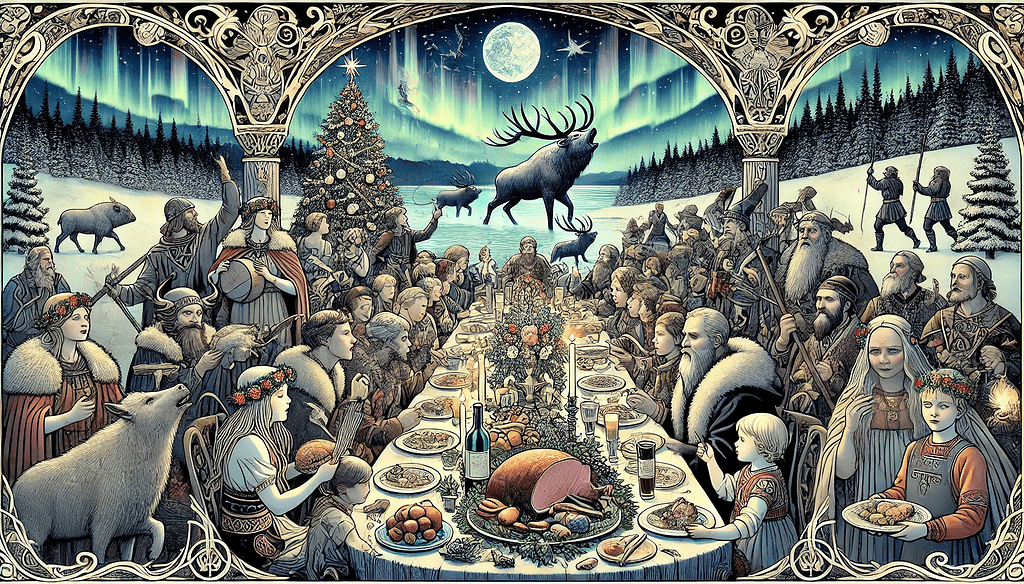
The darkest days of winter have always held a profound significance for ancient pagan cultures. Known as the rebirth of the sun, this midwinter period symbolizes hope, renewal, and the promise of longer days ahead.
During Yule, a festival deeply rooted in Germanic and Norse traditions, communities gathered to celebrate this pivotal moment. They lit bonfires and candles, representing the sun’s return and driving away the darkness.
Feasts were common, filled with hearty foods to sustain through the cold months.
However, as it is often assumed that Yule was predominantly centered around Winter Solstice, there may have been much more to this social ritual and feast for the Germanic cultural sphere.
As German scholar Professor Rudolf Simek has repeatedly written in his numerous books, Yule was also a time to honor, to venerate, to remember the Dead. It was a feast for the Dead.
Key Elements of Midwinter Celebrations:
In modern pagan practices, these customs are embraced with a contemporary twist. Lighting candles during Yule can create an intimate connection to ancient traditions while reminding you of nature’s cycles.
Holding communal feasts or small gatherings offers an opportunity to reflect on personal growth and set intentions for the new year.
The rebirth of the sun remains a powerful symbol that transcends time, inviting you to honor the light within yourself and your community.
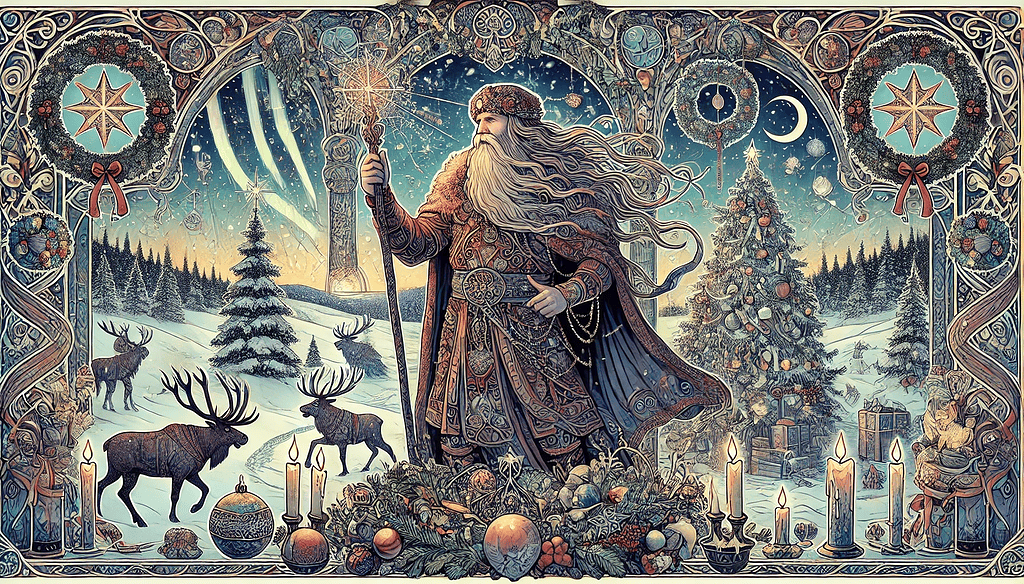
When you think of Santa Claus origins, images of a jolly old man in a red suit bringing gifts might come to mind. Yet, dive deeper into history, and you’ll find that many elements of Santa Claus can be traced back to the Norse god Odin.
Odin, known as the Allfather in Norse mythology, is often depicted as a wise, bearded figure who rode an eight-legged horse named Sleipnir across the sky. This image bears a striking resemblance to Santa Claus, who rides his sleigh pulled by reindeer.
The transformation from Odin to Santa Claus didn’t happen overnight. It was a gradual process influenced by various cultures and religious shifts:
Certain attributes of Santa Claus mirror those of Odin:
Understanding these connections enriches our appreciation of modern Christmas traditions. Recognizing that our festive customs have deep historical roots allows us to celebrate with a blend of ancient wisdom and contemporary joy.
By acknowledging how aspects from Odin’s lore influenced modern Santa Claus mythology, you gain insight into how cultural synthesis shapes holiday traditions. This fusion of beliefs underscores the resilience and adaptability of human culture across centuries.
You also get to see how enduring symbols like gift-giving continue to evolve while retaining their core essence—bringing joy and fostering community spirit during the winter season.
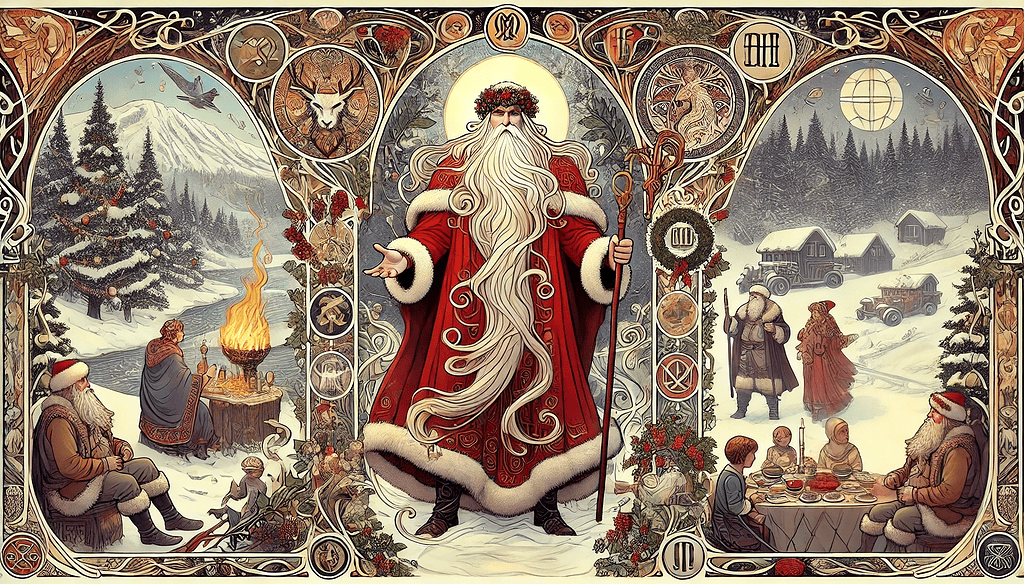
The jolly figure of Santa Claus, bearing gifts and spreading cheer, is often surrounded by myths and misunderstandings about where he comes from. One common misconception is that Santa Claus is purely a modern creation or solely derived from St. Nicholas, the 4th-century Christian bishop known for his generosity.
However, Santa’s character is actually made up of various cultural influences, including significant pagan elements:
While St. Nicholas contributed to the modern image of Santa as a kind gift-giver, many of his traits are similar to those of Odin, the Norse Allfather. Both figures are depicted as wise old men with long beards who travel during midwinter to bring blessings.
The idea of Santa’s flying reindeer may seem whimsical, but it actually resembles Odin’s steed, Sleipnir—a magical eight-legged horse capable of extraordinary speed.
This modern Christmas tradition bears striking similarities to the Wild Hunt led by Odin. Those who were “naughty” faced ominous consequences from the spectral riders, while the “nice” ones could expect blessings and protection during the harsh winter months.
It’s also important to note that many Christmas customs have roots in ancient Yule traditions:
The practice of burning a Yule log and decorating homes with evergreen boughs predates Christianity. These customs celebrate the endurance of life during winter’s darkness, aligning closely with pagan rituals venerating nature, the return of sunlight and in particular the movements of the Sun as Odin himself can be traced back to a Bronze Age sun-cult (Annette Lassen, 2021), and feast in remembrance for the Dead.
The festive gatherings and feasts that mark our Christmas celebrations originate from Yule festivities where communities gathered to honor gods like Odin and celebrate unity amidst winter’s challenges.
By exploring these historical contexts, you can see how pagan elements have seamlessly blended into what we now recognize as Christmas traditions. This blend offers a richer understanding of how different cultures coming together over centuries have shaped our current celebrations.

Embracing Yule traditions provides a meaningful way to connect with ancient roots while honoring the Allfather, Odin. Yule, with its rich tapestry of customs, offers numerous opportunities to infuse modern celebrations with historical reverence.
Creating offerings for Odin during Yule can be a deeply personal and fulfilling experience. Here are some thoughtful suggestions:
Your sacred space doesn’t have to be grand; it just needs to resonate with you. Here are some tips for creating this special area:
Infusing your celebrations with activities inspired by Norse traditions creates an engaging and authentic Yule experience:
Bring family and friends together for a feast that honors the spirit of community central to ancient Yule celebrations:
Engage in activities that echo historical customs:
In celebrating Yule today with these rituals and activities, you not only honor ancient traditions but also bring their timeless spirit into contemporary life.
This blend of old and new enriches your connection to history while fostering a deeper sense of community and belonging during this festive season.
Celebrating Yule today can be a rich blend of ancient customs and modern practices. Hosting a traditional Yule feast is a great way to start. You might include:
For community activities, consider caroling, also known as wassailing. This was a popular tradition where groups would sing door-to-door, spreading cheer and goodwill. To give it a Norse twist, you could incorporate:
Practical tips for incorporating traditional customs into modern celebrations include:
These rituals honor both your Norse heritage and contemporary practices, making your Yule celebration meaningful and memorable.
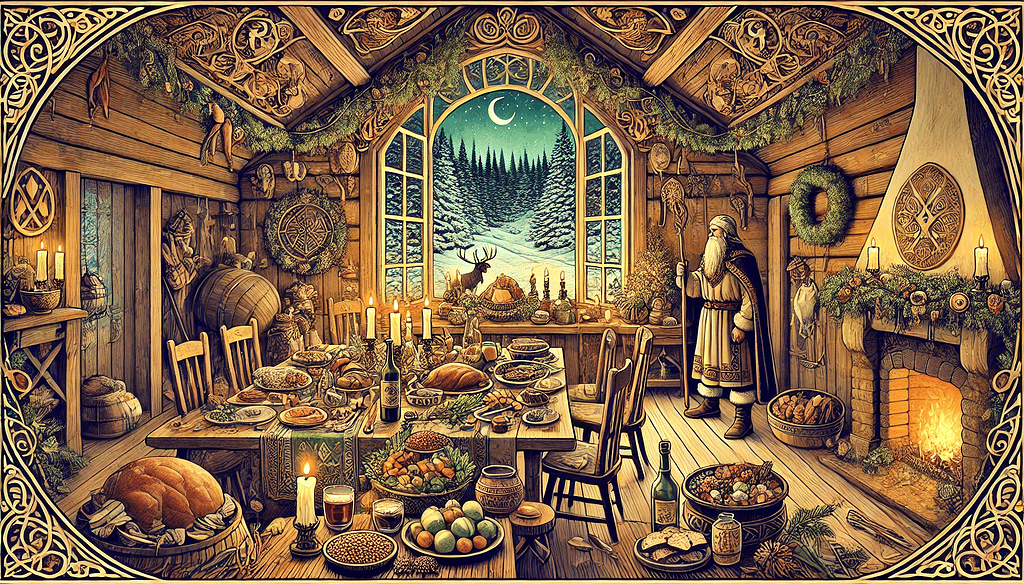
Rediscovering the ancient traditions of Yule offers a powerful way to connect with our heritage. By embracing these customs, you honor your ancestors and bring a sense of continuity to your celebrations.
Whether through offerings to Odin or hosting a traditional Yule feast, reclaiming these ancient practices enriches your modern life. May your journey into the past illuminate your present, bringing warmth and light during this festive season.